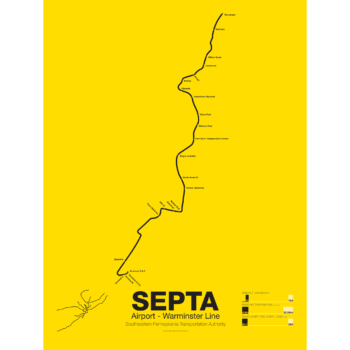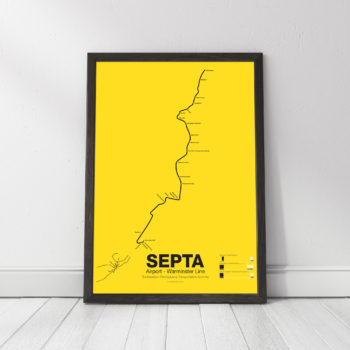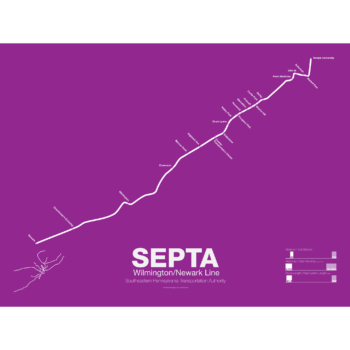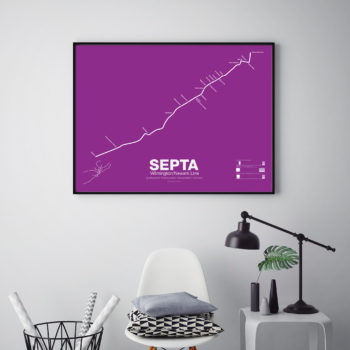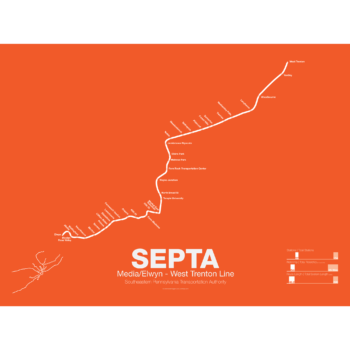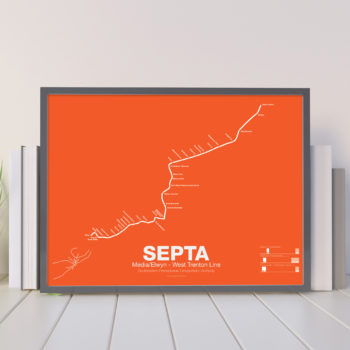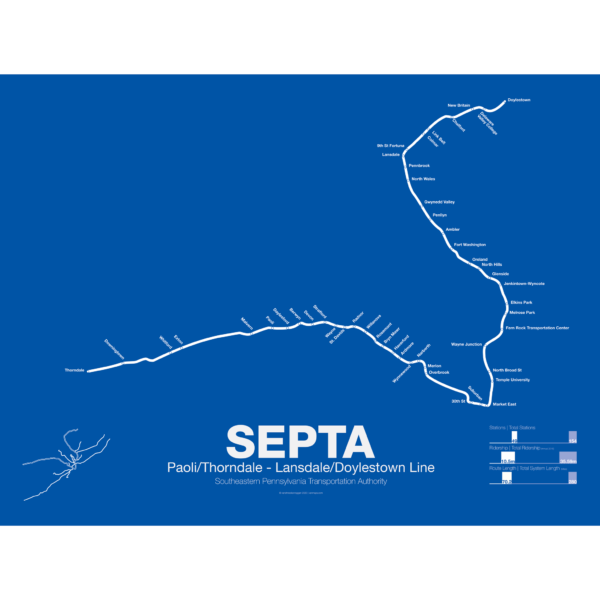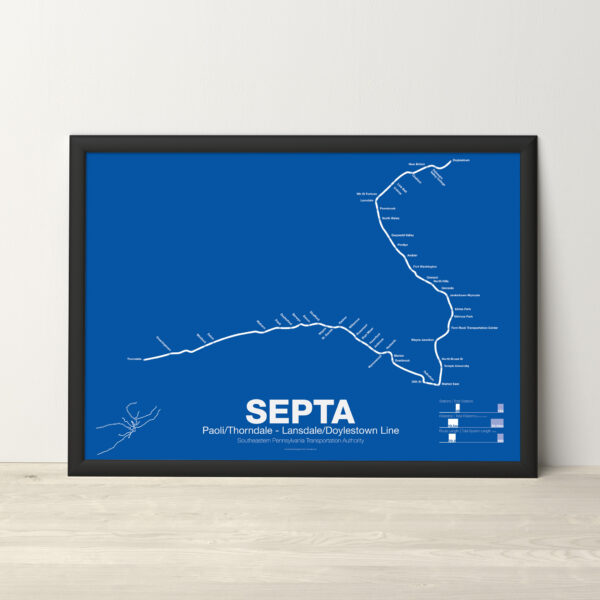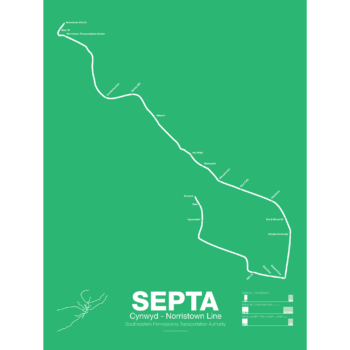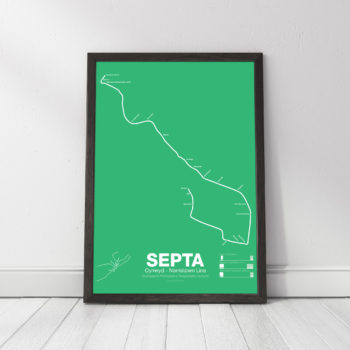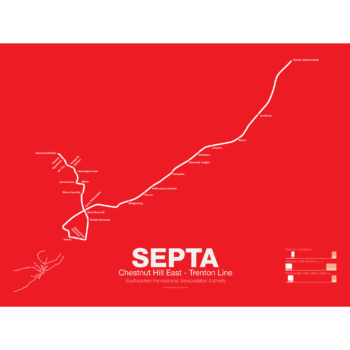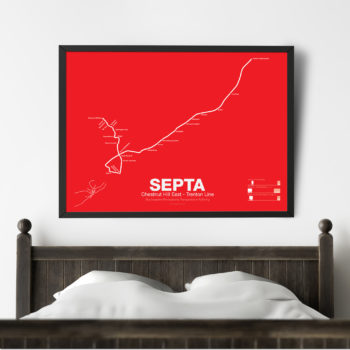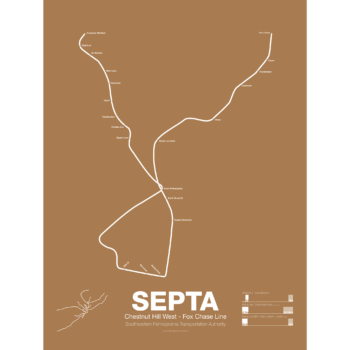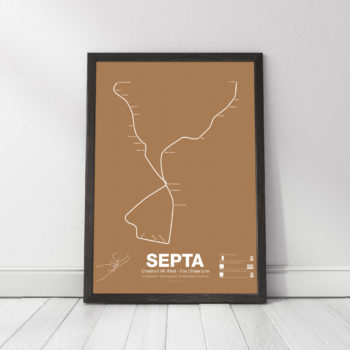septa
13 Products
-
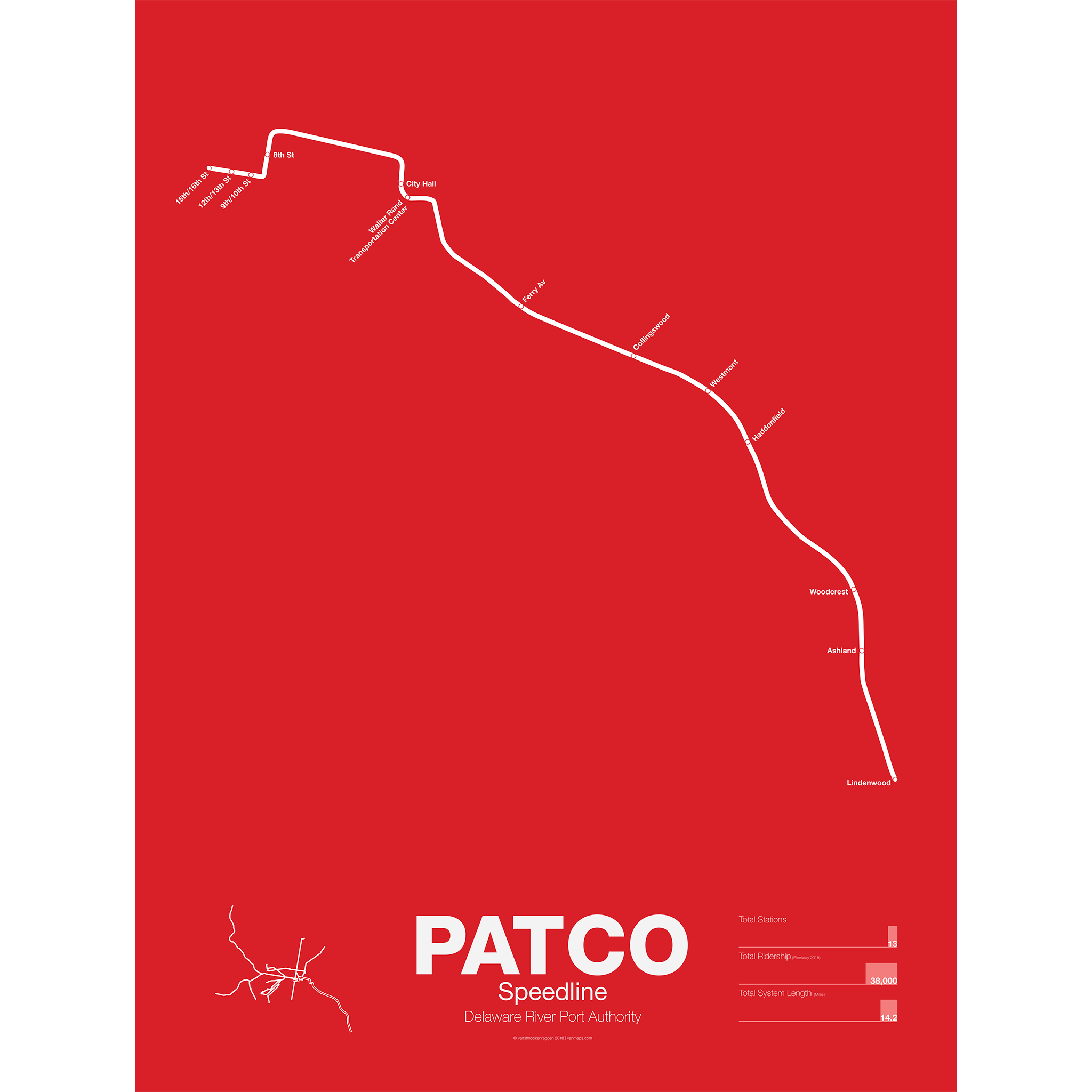
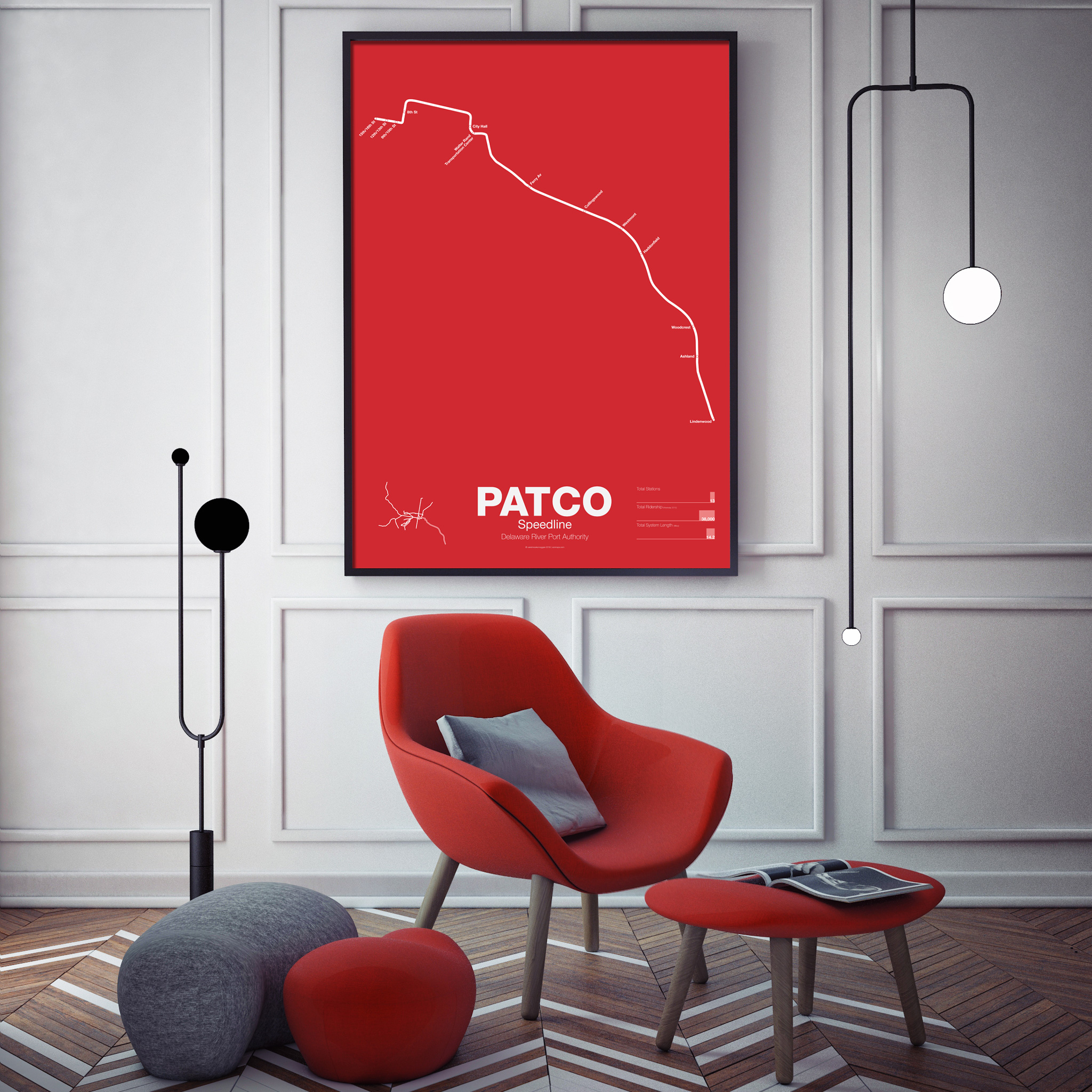 $30.00 – $80.00
$30.00 – $80.00PATCO (Port Authority Transit Corp) is owned by the Delaware River Port Authority (DRPA), a separate authority than SEPTA. The line began as a simple 4 station shuttle over the newly opened Benjamin Franklin Bridge in 1936. The line ran from 8th St and Franklin Sq in Philadelphia and Broadway in Camden, NJ. On the Philly side the line connected to a tunnel which had been built for a proposed subway loop around Center City but the loop idea had been shelved after construction started. The Broad-Ridge Spur used the tunnel to reach 16th St-Locust but originally the PATCO trains terminated at 8th and Market. In 1968 the connection was rebuilt so that Broad-Ridge trains terminated at 8th St and PATCO trains were extended to 15th-16th station. This section of tunnel is still owned by SEPTA and is leased to PATCO.
On the New Jersey side PATCO had been little more than a shuttle which required suburban commuters to transfer to continue their journey. In 1951 DRPA commissioned a study which recommended 3 different branches, one to Moorestown, one to Kirkland, and one to Woodbury Heights. A later study suggested that the Kirkland route offered the most potential ridership and so PATCO was extended to Lindenwood station in 1969. PATCO continues to study expansions and has looked into extended a branch to Glassboro as well. There is an abandoned station at Franklin Sq which sees requests now and then for reactivation but PATCO claims that it wouldn’t receive high enough ridership (the area around the square was razed in the 1970s to build the Vine St and Delaware Expressways interchange.
Printed on Satin finish 80# cover stock – 220 GSM. Made in the USA! Standard production time is 5 days. Allow more time for shipping.
-
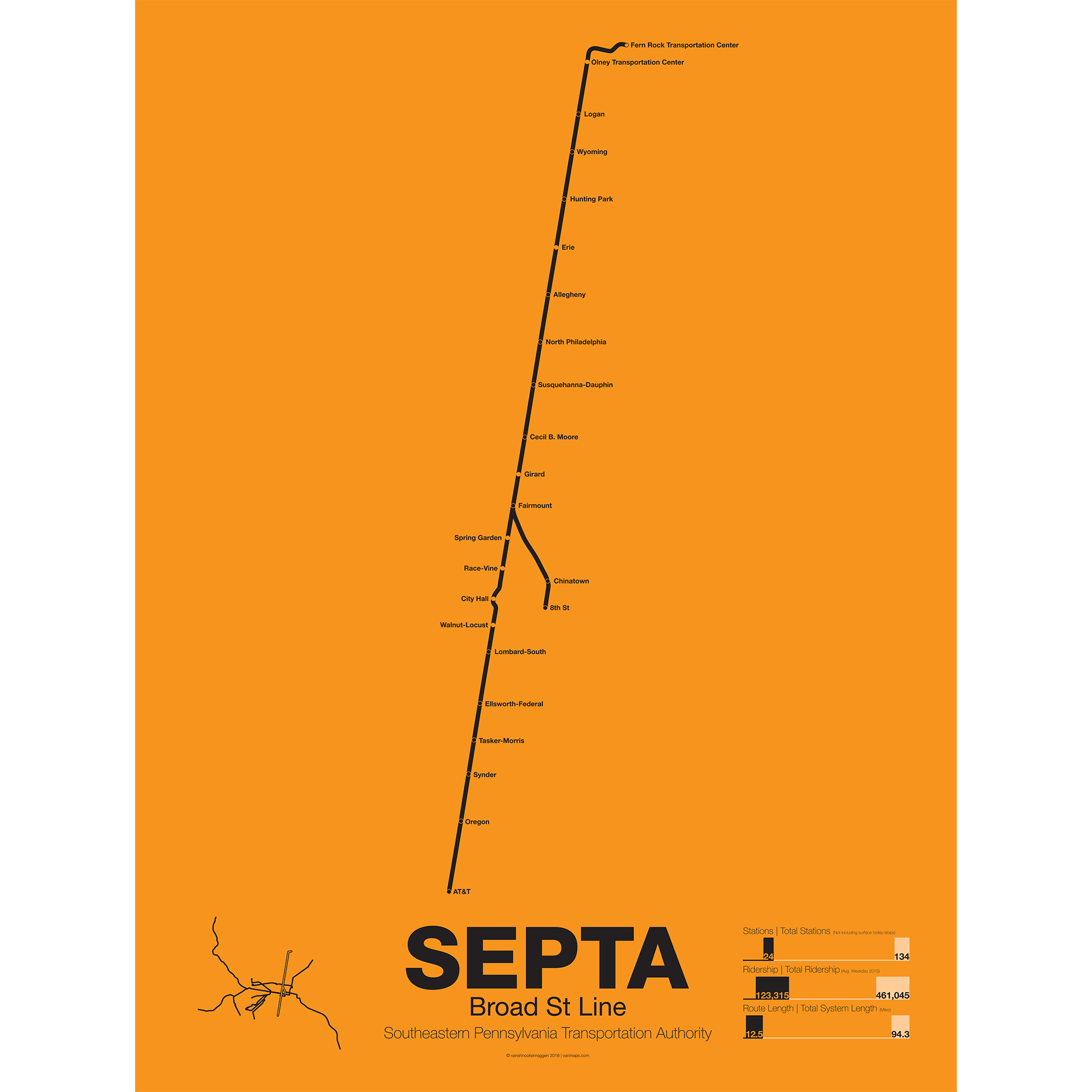
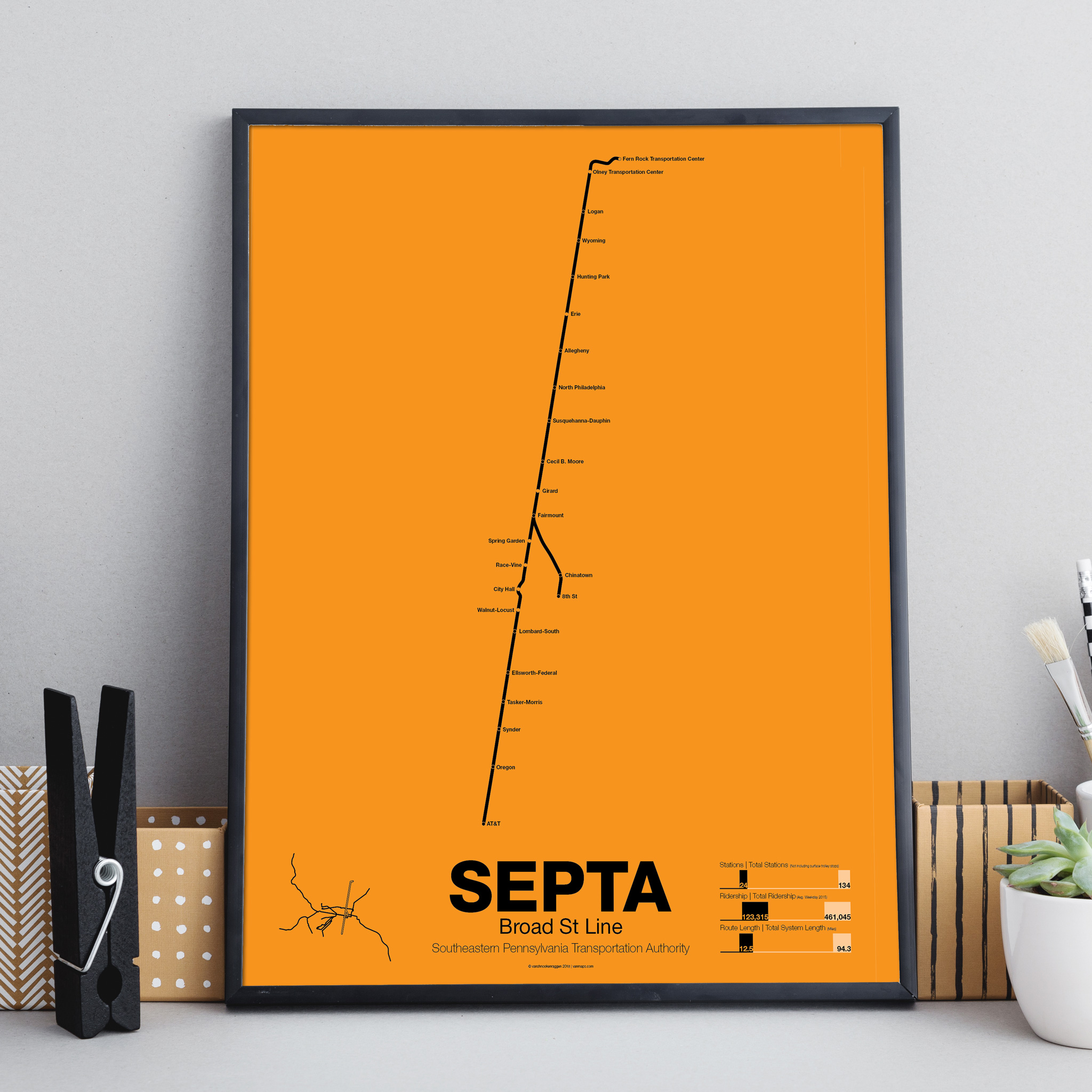 $30.00 – $80.00
$30.00 – $80.00The Broad Street subway line was opened in 1928 from Olney Ave to City Hall with subsequent extensions south to Walnut-Locust, Lombard-South, Sunder Ave, Pattison Ave (now AT&T) and finally Fern Rock over the next years and decades. Broad St was envisioned as part of a larger subway network and was to be a trunk line for multiple suburban branches, none of which have been built (the most famous is the still proposed Roosevelt Boulevard Subway). The line was built with 4 tracks, two local and two express, and junctions were built for the future branches, the only one built being the Ridge Ave Spur which has been converted for use by PATCO trains. Broad St runs four different services: local, express, Ridge Ave, and special event trains for games at the NRG sports complex.
The SEPTA Broad St Line poster shows the line with local and express stations along with statistics and a mini map showing the line as part of the overall SEPTA network.
Printed on Satin finish 80# cover stock – 220 GSM. Made in the USA! Standard production time is 5 days. Allow more time for shipping.
-
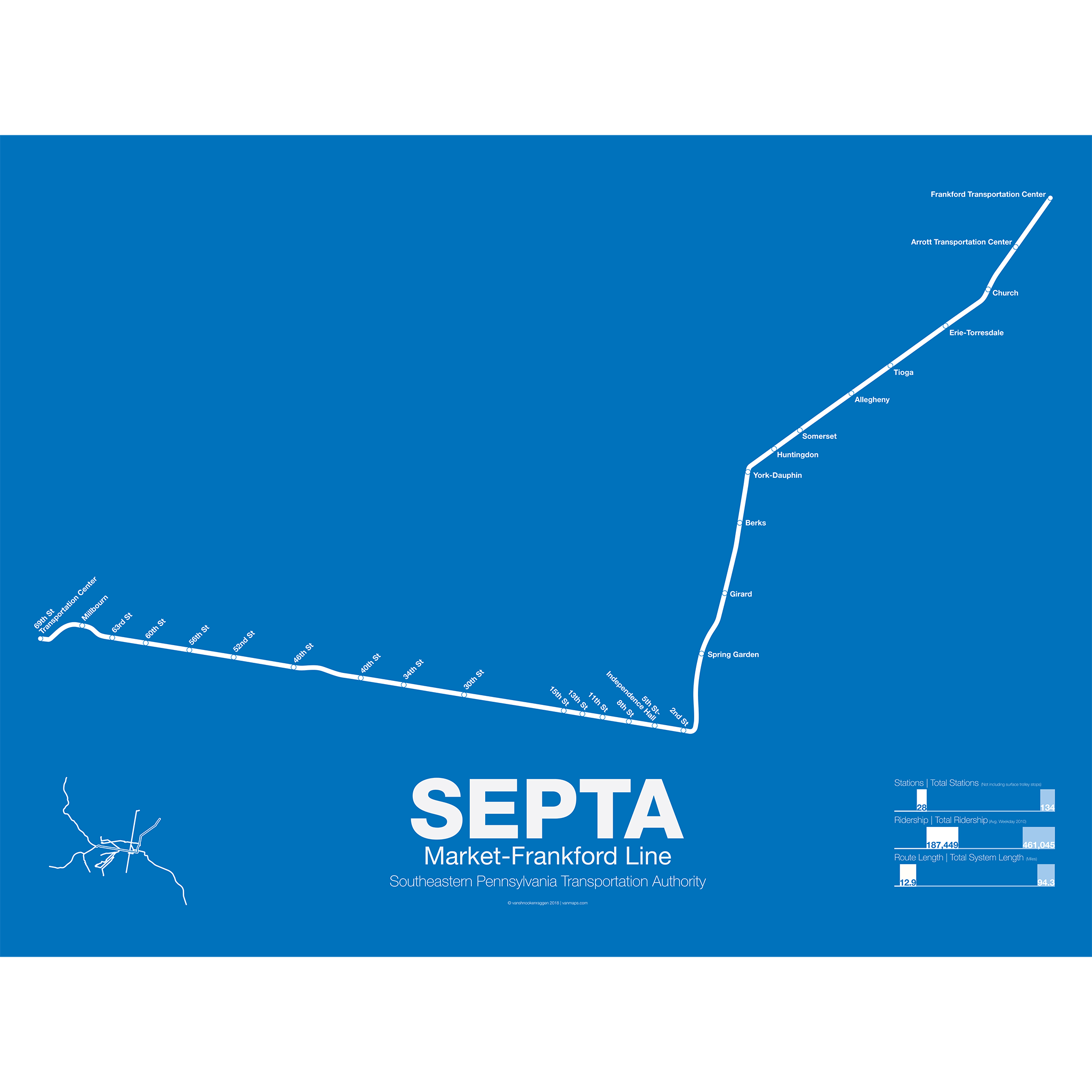
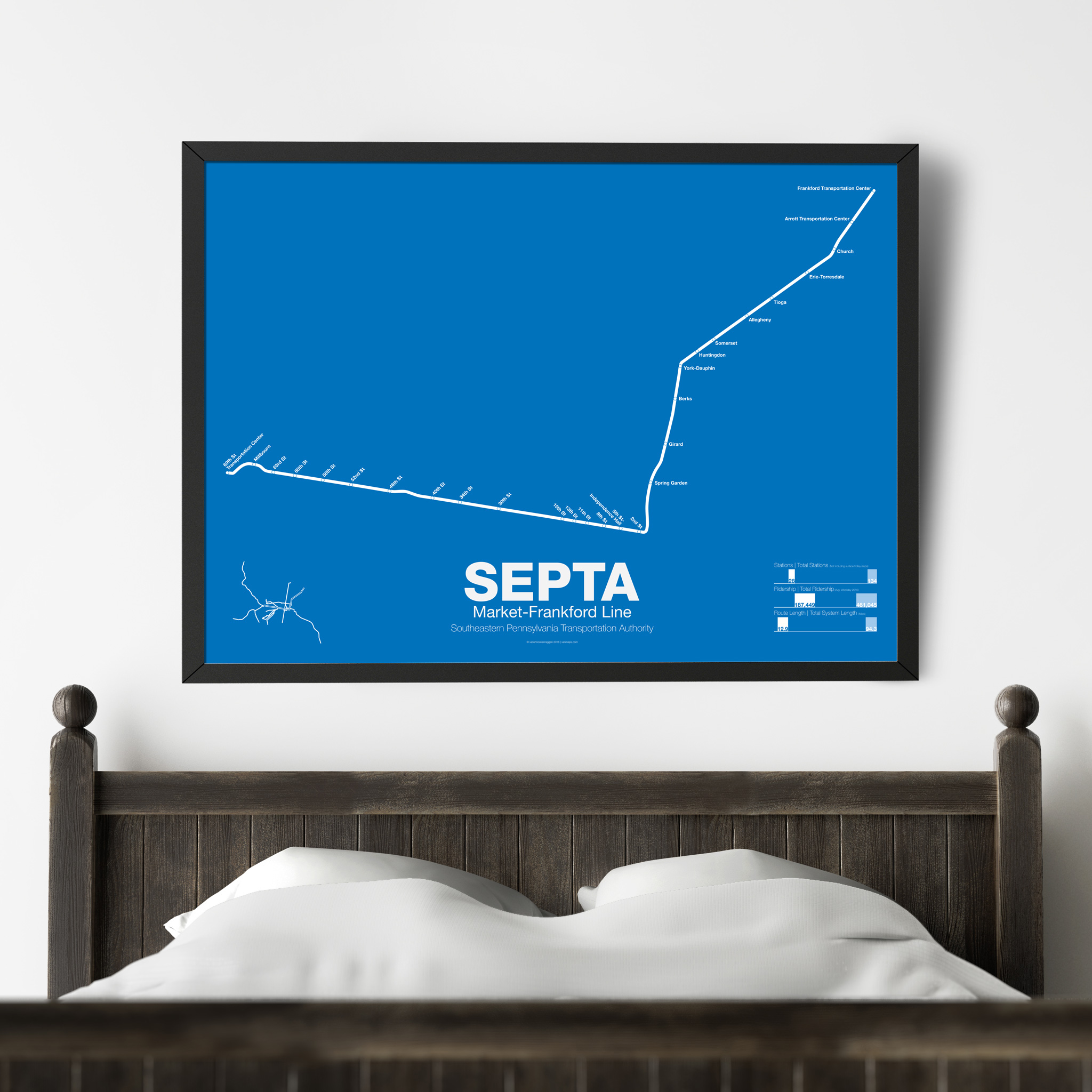 $30.00 – $80.00
$30.00 – $80.00The Market-Frankford Line is the oldest subway in Philadelphia with the initial section from 23rd St to City Hall with an elevated track running across the Schuykill River to the 69th St terminal opening in 1907. The line was built with 4 tracks, two for the elevated and two for the surface trolleys. Originally both sections looped back at City Hall but a year later the elevated trains were extended via subway to 2nd St and to Chestnut St where a portal brought them back to the surface again. Before the Frankford extension was completed, in 1922, the Market Line turned south along Delaware Ave to service the popular ferry terminals. The Frankford extension terminated at Bridge St but was intended to be extended northeast to Rhawn St. When the Benjamin Franklin Bridge opened to traffic in 1926 ferry traffic dropped off and the branch serving the terminals was closed in 1939. The subway was extended west to 46th St (to allow for the removal of the elevated tracks) starting in 1930 but due to budget problems and World War II the extension did not open until 1955. In 1977 the Delaware Ave portal was relocated along the median of the newly constructed Delaware Expressway.
The Market-Frankford Line is unique in that it uses a 5′ 2.5″ rail gauge, standard for trolleys in Pennsylvania, which is different from the standard 4′ 8.5″ gauge which is used by most trains in the United States. Service on the line is skip-stop with A and B trains trading off service at further out stations but all stopping at Center City stations.
Printed on Satin finish 80# cover stock – 220 GSM. Made in the USA! Standard production time is 5 days. Allow more time for shipping.
-
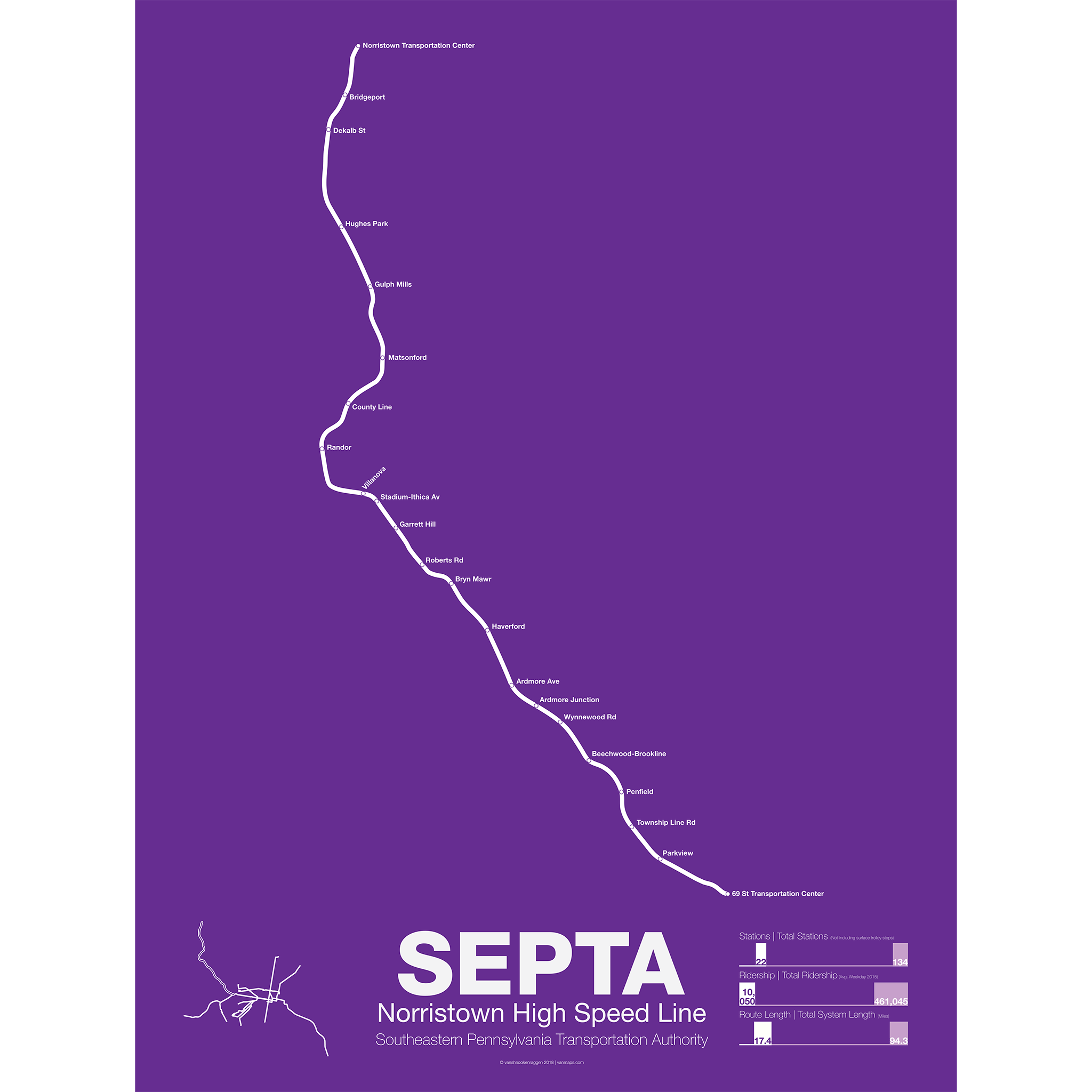
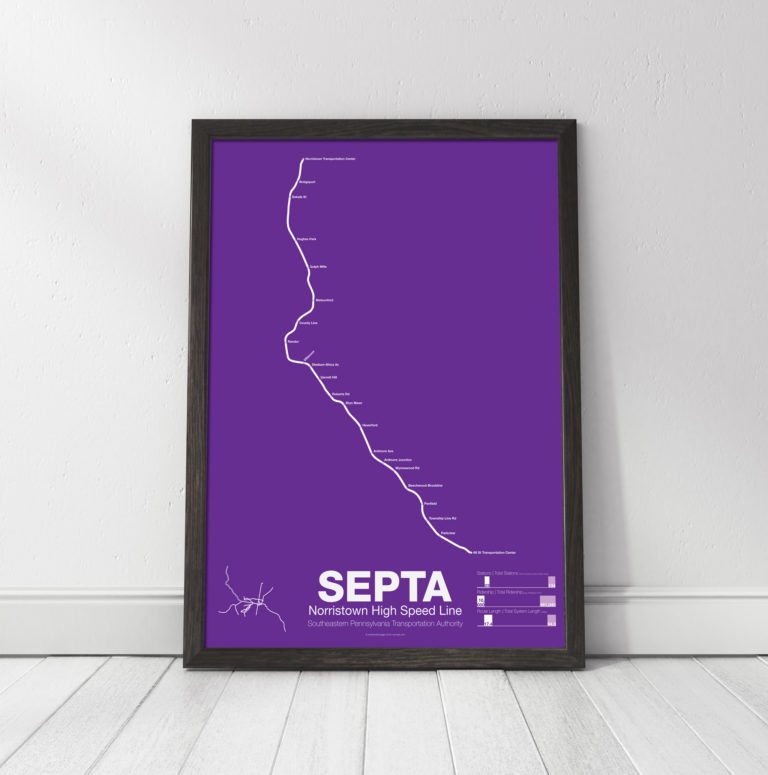 $30.00 – $80.00
$30.00 – $80.00The Norristown High Speed Line (SEPTA route 100) began as a Philadelphia & Western Railroad interurban trolley in 1907 between the new 69th St Market-Frankford terminal and Strafford, PA. In 1912 a branch was built to Villanova and then extended to Norristown. The new branch proved more popular than the Strafford branch which was eventually abandoned in 1956. A year before, in 1955, the line was taken over by the Philadelphia Suburban Transportation Co (more commonly known as the Red Arrow Lines) along with Routes 101, 102, 103, and 104. Route 103 to Ardmore was abandoned in 1966 and Route 104 to West Chester was abandoned in 1958.
The Norristown High Speed Line runs four services, a local, the Norristown Express, Hughes Park Express (short turning at Hughes Park, and the Norristown Limited which only stops at 6 stations between Norristown and 69th St. Unlike the Market-Frankford Line and Routes 101 & 102 (which use a larger 5′ 2.5″ rail gauge) the Norristown Line uses a standard 4′ 8.5″ gauge meaning that service could not be extended into Philadelphia via the existing subway.
Printed on Satin finish 80# cover stock – 220 GSM. Made in the USA! Standard production time is 5 days. Allow more time for shipping.
-
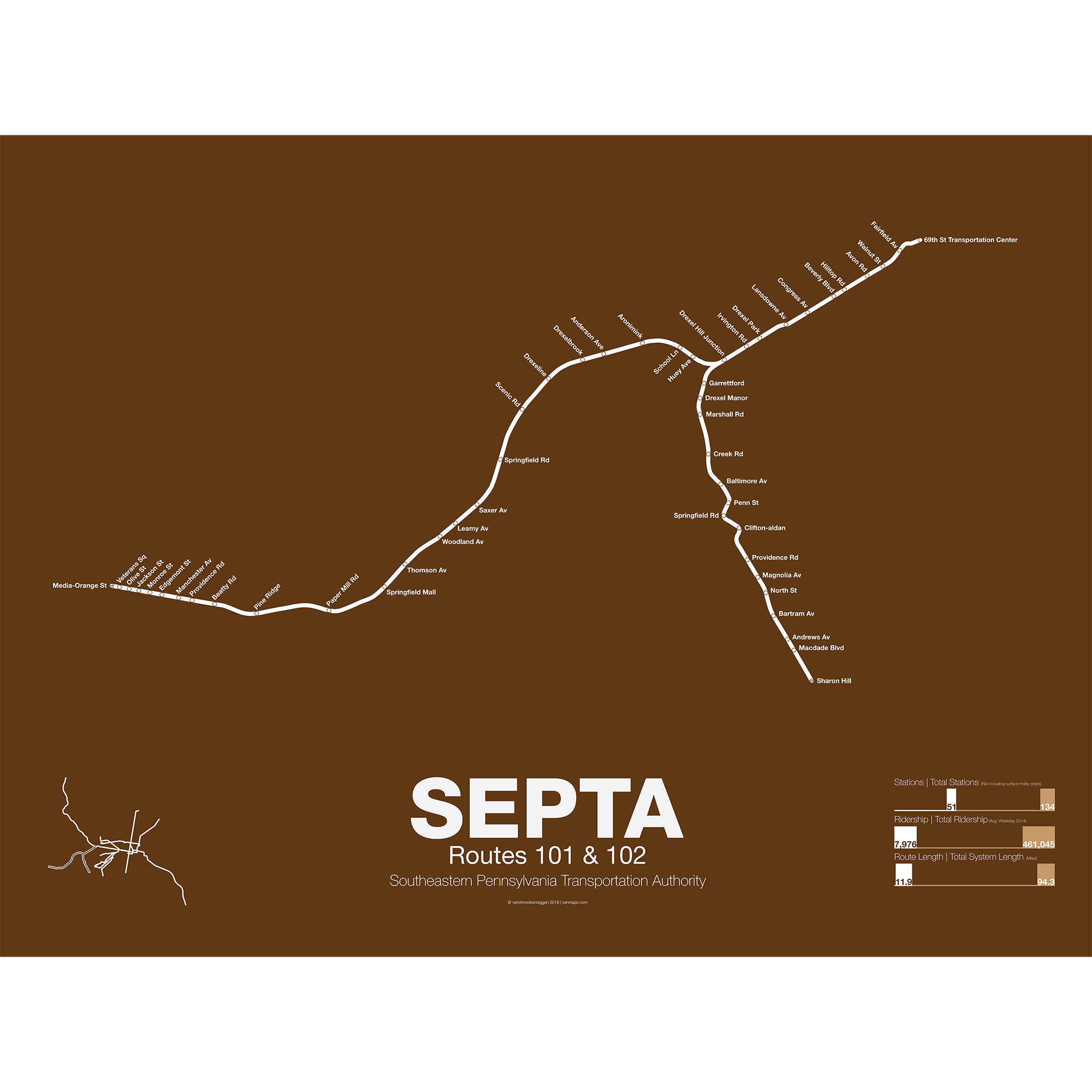
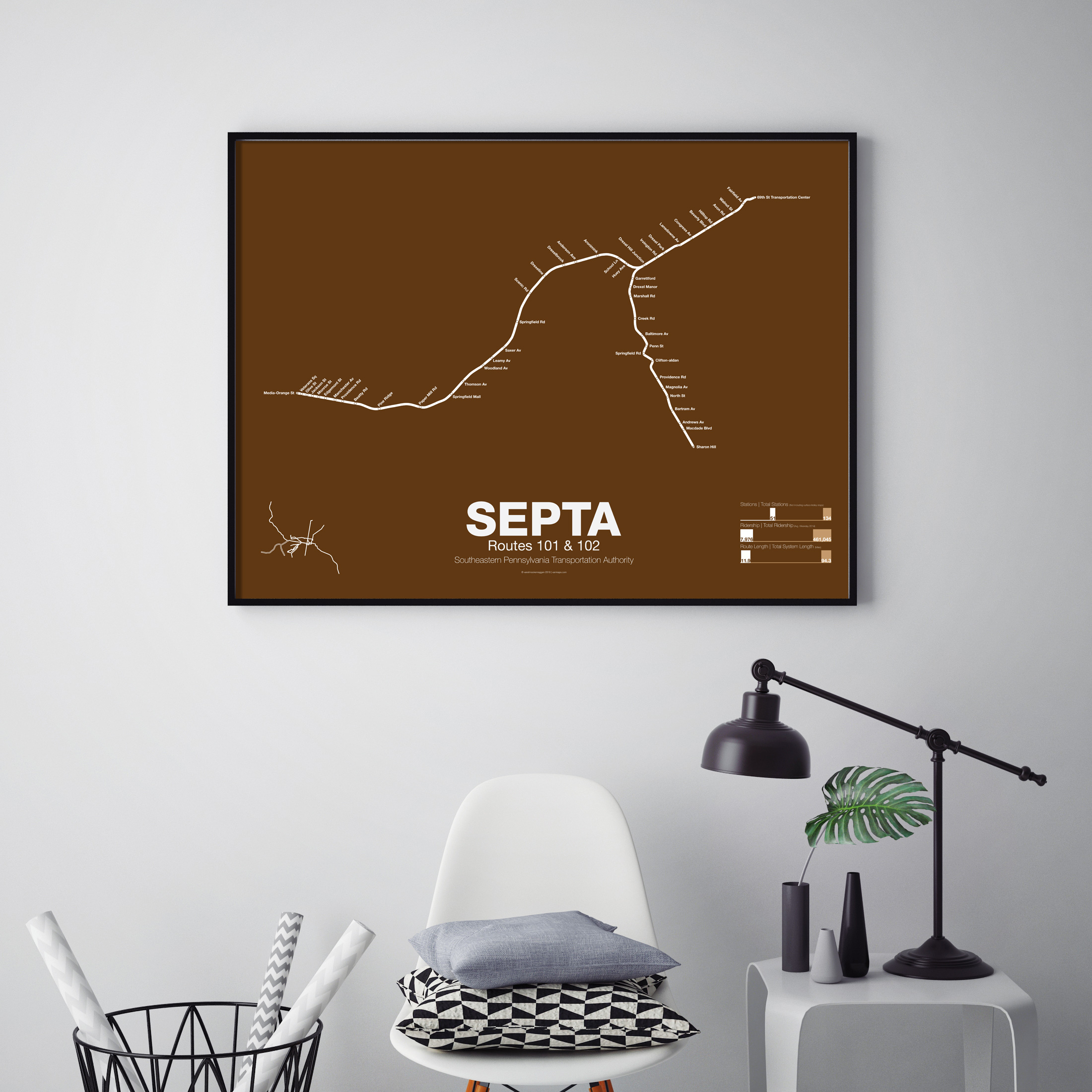 $30.00 – $80.00
$30.00 – $80.00Routes 101 and 102, along with the Norristown HSL, are all that remains of the Philadelphia Suburban Transportation Company lines, commonly known as the Red Arrow Lines. Route 101, which dates from 1913, runs from downtown Media to 69th St Transportation center along a dedicated ROW but within Media along the street. Route 102, which dates from 1906, runs from Sharon Hill to 69th St.
Routes 101 and 102 use the larger 5′ 2.5″ rail gauge which is also used by the Market-Frankford Line along with other trolleys in Philadelphia. The routes run a mixture of local and express services. Until a few years ago SEPTA gave these routes a brown color on the system map but recently changed them to green along with the Subway-Surface lines. To avoid confusion with the other poster the Routes 101 & 102 poster is the original brown.
Printed on Satin finish 80# cover stock – 220 GSM. Made in the USA! Standard production time is 5 days. Allow more time for shipping.
-
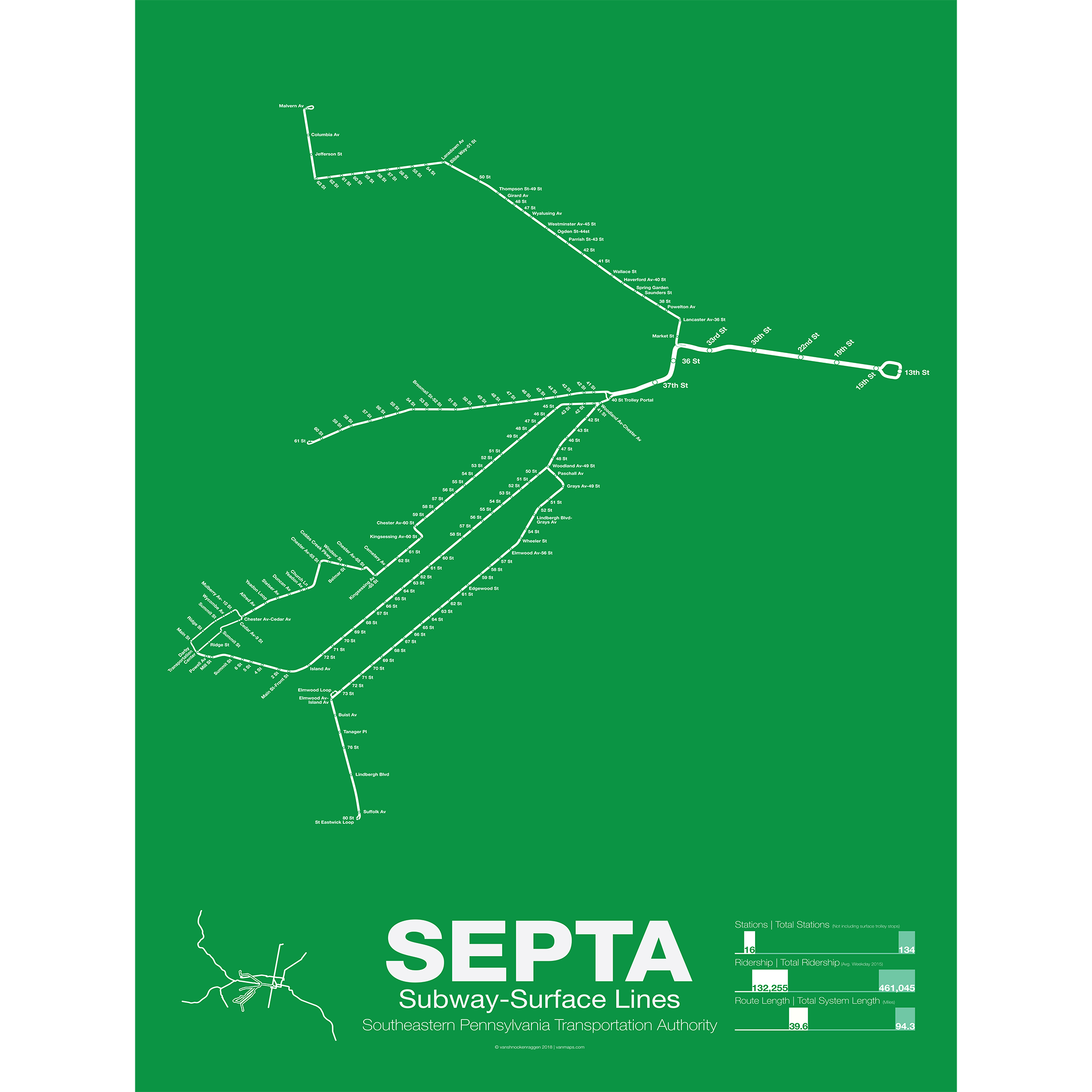
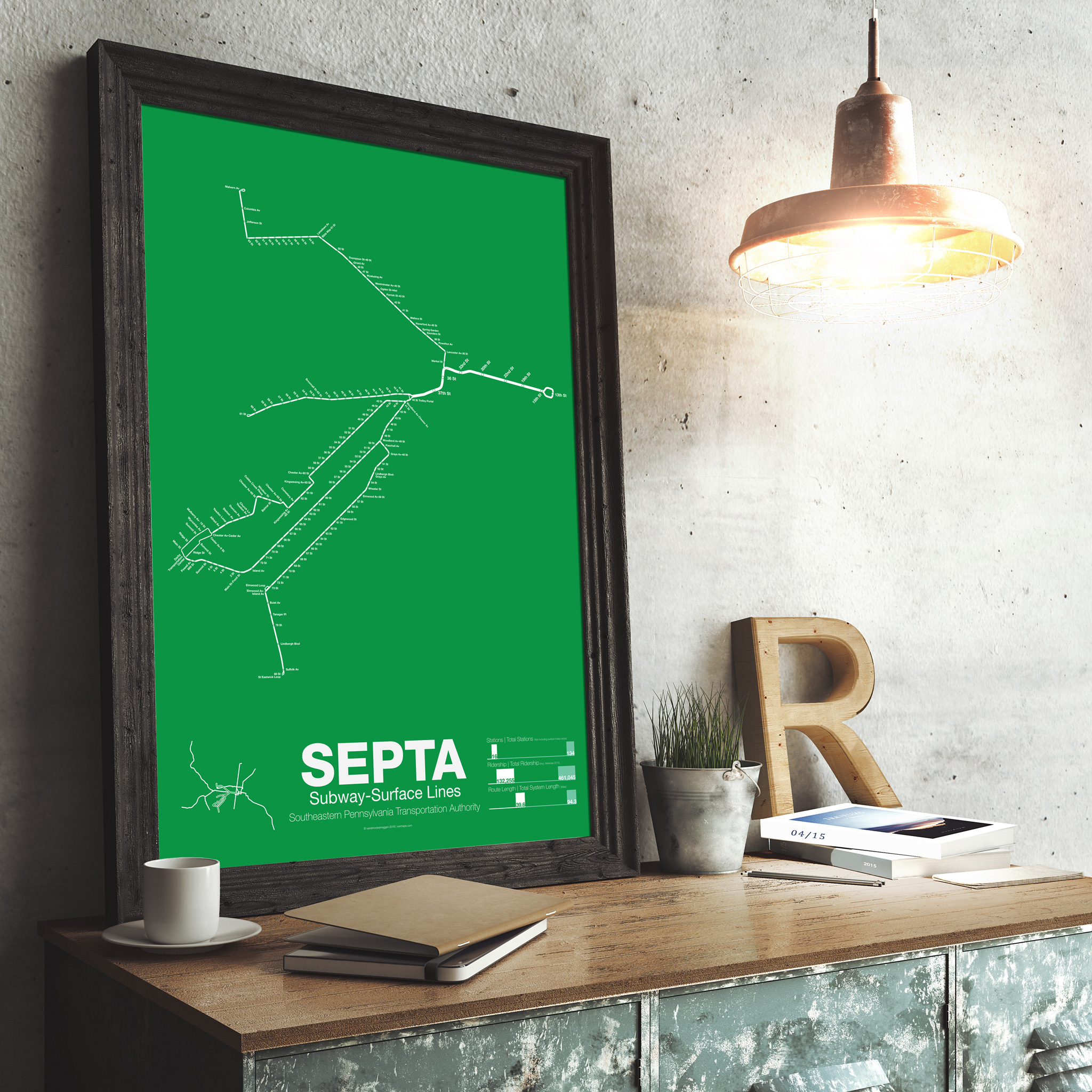 $30.00 – $80.00
$30.00 – $80.00When the Market-Frankford subway opened in 1907 it provided two tracks for surface line streetcars to use with a loop at City Hall. Similar to Boston’s Green Line and San Francisco’s Market St Line the subway uses pre-WW2 streetcar lines as branches. After World War 2, like in most American cities, trolleys were converted to bus lines but in Philly there were many lines which never made the conversion. The streets of Philadelphia are lined with disused streetcar tracks but in West Philly there is still and active network; routes 10, 11, 13, 34, and 36 use the subway and Line 15 crosses the city along Girard Ave but does no use the subway (Line 15 is not included on the poster but is included on the mini-map). The original subway portal was located at 23rd St but when the Market-Frankford Subway tunnel was extended west so too was the trolley tunnel with a new portal at 36th and Ludlow Streets and another at 40th St between Baltimore and Woodland Aves.
The trolley lines have been threatened with replacement via bus or subway extension for decades but due to a lack of funds and popularity the streetcars remain and SEPTA is studying bringing back older lines as well. New cars are being purchased with low floors to help riders in wheelchairs and studies are being made looking at consolidating surface stops to speed up trips.
Printed on Satin finish 80# cover stock – 220 GSM. Made in the USA! Standard production time is 5 days. Allow more time for shipping.

